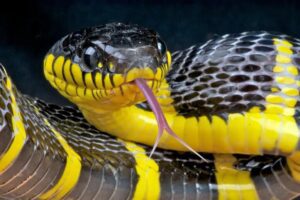
Like dangerous snakes, few animals instill terror in people. The risk of coming into contact with a deadly snake, much less getting bitten and passing away from the toxin injected into one’s body, is exceedingly minimal in comparison to the likelihood of passing away from cancer, heart disease, or a car accident. Despite this, a lot of people continue to experience real anxiety due to this irrational worry. Despite the fact that most of the deadliest snakes mentioned here are found in tropical areas, you might be able to locate a few of them in local zoos and research facilities.
Anaconda (The Deadliest Snakes)

The majority of us are familiar with the anaconda thanks to Hollywood movies. not the music, but the snake! The anaconda’s substantial size makes up for its negligible venom shortage. Anacondas also compress their prey by wrapping their entire body around it before eating it whole. It just completely envelops y
Jararaca (The Deadliest Snakes)
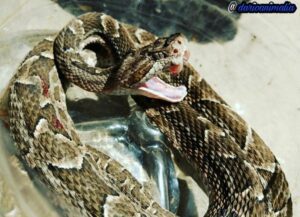
Southeast Brazil is home to one of the most well-known venomous snakes in the world, the Jararaca. Between 1902 and 1945, the Jararaca was accountable for more than 52% (3,446 instances) of all snakebite cases, with a shocking 0.7% mortality rate (25 deaths).
Black Mamba (The Deadliest Snakes)

If you don’t already have the heebie-jeebies, be ready. A black mamba can strike 12 times in a row and each bite contains a significant amount of poisonous material. Furthermore, a bite almost invariably results in death, which can happen in as little as 15 minutes. That’s all, then!
Tiger Keelback (The Deadliest Snakes)
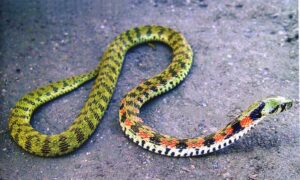
A water snake called the Tiger Keelback can be found in Japan and other nations in Eastern Asia. Man, it’s tough to locate a cheap ticket right now to sate your wanderlust. You should be aware that the Tiger Keelback is both quite terrifying and timid. This strange snake can consume toxic creatures, store them in its own glands, and then release them at a later time.
Indian Cobra (The Deadliest Snakes)

This list includes all four members of the “Big Four,” a common and hazardous family of snakes found in India. They are all poisonous snakes, no doubt about it. The Indian Cobra is renowned in Indian mythology, and “snake charmers” commonly use them. The paralysis you suffer after being bitten could result in cardiac arrest or even respiratory failure.
Rattlesnake (The Deadliest Snakes)
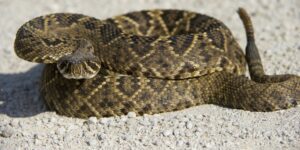
Rattlesnakes are surely a species of snake that you are familiar with because they are thought to be killing machines. Fun? NOPE. The only advantage of being bitten by a rattlesnake, which is common in parts of North America, is that it rarely results in death if treated quickly.
Common Krait (The Deadliest Snakes)

Meet the Common Krait, another one of India’s “Big Four” animals. Its extremely flat skull makes it simple to identify. If you come across the snake during the day, it is more likely to conceal and move slowly. In contrast, the Common Krait’s irritability will rise swiftly at night and it will not think twice about biting at the first sign of irritation. If you don’t cure a bite, brain damage, paralysis of the muscles, and nerve damage will soon follow.
Saw Scaled Viper (The Deadliest Snakes)
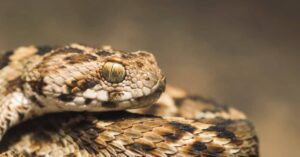
Scaled vipers are found in India, China, and Asia, thus we should be careful when booking that accommodation. Nighttime only, saw-scaled vipers are exceedingly quick. The first difficulty you’ll encounter is sudden mouth bleeding, puffiness, and pain. Additionally, your blood pressure will drop as your heart rate does. After being bitten, you should be aware that you will endure extreme pain for the next four to five weeks.
Desert Horned Viper (The Deadliest Snakes)
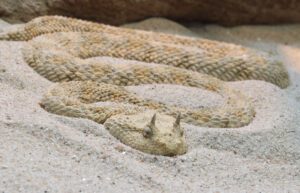
The next on the list is the Desert Horned Viper. True to its name, this creature possesses horns that cover its eyes. We wouldn’t take that inexpensive trip to the Middle East and northern Africa if we were you. Why? Obviously, their deadly bite.
Philippine Cobra (The Deadliest Snakes)

You are looking at THE most venomous and lethal member of the Cobra genus. The scary Philippine Cobra can shoot its poison up to 10 feet away, which is awesome. You’ll have a cardiac and respiratory collapse in a matter of minutes.
Boomslang (The Deadliest Snakes)
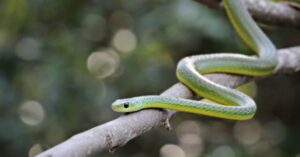
The Boomslang is a quick animal that can climb trees and is usually found in South Africa. Its bite is filled with poisonous toxins. Oh, and they have superhuman eyesight like Superman and can move their heads as in The Exorcist to see what is right in front of them better.
Peron’s Sea Snake (The Deadliest Snakes)
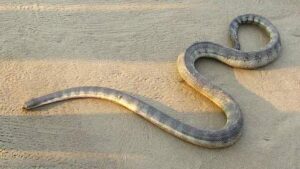
It might be better to stay away from that inexpensive flight to the islands in the Coral Sea, the Strait of Taiwan, and the Gulf of Siam. Why? Because the Peron’s Sea Snake lives there, and its bite contains enough venom to kill you in a matter of minutes. Aside from that, it is the only sea snake with spines on its head.
Elephant Trunk Snake (The Deadliest Snakes)

Mark Indonesia off your cheap flight itinerary because it is the home of this large, ominous snake. The Elephant Trunk Snake has droopy, wrinkled skin that resembles that of an elephant and can reach a length of 10 feet. Remember that the snake, not the elephant, has the length and power to drag a grown man beneath the water. Yes, give that some thought. No pun intended!
Eastern Brown Snake (The Deadliest Snakes)

Despite having a friendly name, the Eastern Brown Snake is anything but friendly; its venom is potent enough to instantaneously kill an adult human. Unsatisfactory is an understatement. If you come across one, scientists strongly urge that you remain motionless. It’s true that saying than doing.
King Cobra (The Deadliest Snakes)
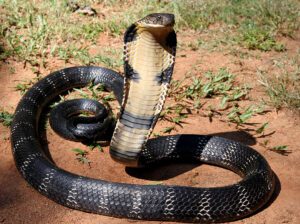
The King Cobra, the longest and most venomous snake in the world, is found in the jungles of India and Asia. While the King Cobra usually primarily hunts lizards, rodents, and other snakes, its venom can be fatal if it bites a human. How deadly? The survival rate is an astounding 40% if untreated.
Death Adder (The Deadliest Snakes)
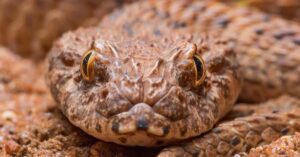
The most poisonous and swiftest snake in the world can be found in Australia, New Guinea, and a few surrounding islands. The problem is that they are incredibly patient because they are known to wait in an ambush for prey. You’ll have some slight discomfort within six hours of being bitten, followed by paralysis and respiratory collapse. Fortunately, there is an antivenin on hand.
Darevsky’s Vipers (The Deadliest Snakes)

Sadly, Darevsky’s vipers, one of the most dangerous snakes in the area, may be found in Armenia and Turkey. But according to a recent study, there may only be 500 of these specific snakes alive today. It’s up to you whether or not that’s good news.
Yellow Bellied Sea Snake (The Deadliest Snakes)
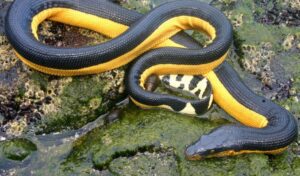
Let’s consider it excellent news that the Yellow Bellied Sea Snake is simple to find in the ocean. The poison is really potent, though, if you get bitten.
Coastal Taipan (The Deadliest Snakes)

The Coastal Taipan is native to coastal areas of northern and eastern Australia as well as the island of New Guinea. According to the majority of toxicological research, this species is the sixth-most poisonous terrestrial snake. Yikes.
Russell’s Viper (The Deadliest Snakes)
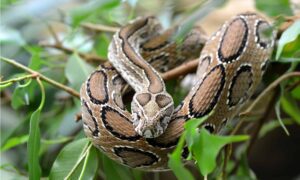
Asia is home to Russell’s viper, or Daboia, one of India’s “Big Four” snakes. Because of their more aggressive demeanor and frequent presence in densely populated regions, Russell’s vipers are blamed for a significant number of snake attacks. Swell.
Malayan Snake (The Deadliest Snakes)
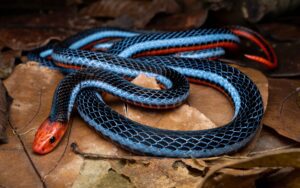
The Blue Krait, sometimes known as the Malayan Snake, is found in several regions of Southeast Asia and Indonesia. lessens the appeal of the idea of a cheap flight to the region. Furthermore, unless you receive the antivenin, half of a Malayan snake’s bites are lethal. There’s also the fact that their poison is 16 times (!) more toxic than the Cobras.
Dubois’ Seasnake (The Deadliest Snakes)
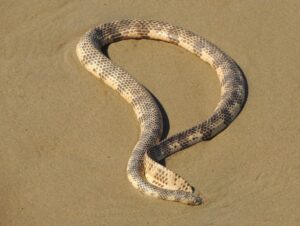
The Dubois’ Seasnake can be found in places like Papua New Guinea, New Caledonia, and Australia’s northern, eastern, and western coastal regions. Doesn’t leave much opportunity for securing a cheap ticket or lodging arrangements in the neighborhood, does it? In addition, the Dubois’ Seasnake is among the three most venomous snakes in the world and one of the most deadly sea snakes. Great.
Many Banded Krait (The Deadliest Snakes)
 The Many Banded Krait, also known as the Taiwanese Krait or the Chinese Krait, is a highly poisonous species that is found in central and southern China as well as Southeast Asia. Yes, we would abandon that inexpensive ticket. Additionally, the chance of death from being bitten is between 25 and 35% or 70 and 100%. Anyhow, not good!
The Many Banded Krait, also known as the Taiwanese Krait or the Chinese Krait, is a highly poisonous species that is found in central and southern China as well as Southeast Asia. Yes, we would abandon that inexpensive ticket. Additionally, the chance of death from being bitten is between 25 and 35% or 70 and 100%. Anyhow, not good!
Burrowing Asp (The Deadliest Snakes)
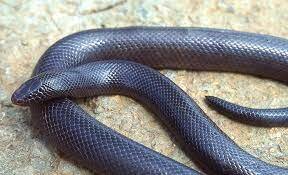
Play the horrific “whomp-whomp-whomp” as it Burrowing asps are extremely deadly, particularly when present around young children. Why? In places like sand pits or behind slides, the burrowing asp conceals itself underground. Furthermore, just coming into contact with your flesh would make their projecting fangs extremely toxic. They don’t even have to bite you to kill you or do major injury.
Cape Cobra (The Deadliest Snakes)
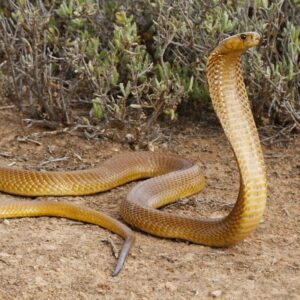
The Cape Cobra is mostly because Cape Cobra is common around and inside homes, where they can carry incredibly deadly venom. Furthermore, the mortality rate is extremely high because it might take anywhere from an hour (in extreme situations) to 10 hours or more for someone to pass away. Another symptom is respiratory failure brought on by paralysis, however, there is an antivenom for this.
Forest Cobra (The Deadliest Snakes)

The Forest Cobra is a snake that lives in central and western Africa. A bite from the Forest Cobra is **ding-ding-ding** a life-threatening emergency, despite the fact that it is less frequent for people to get bitten than by any other African snake.
Black Tiger Snakes (The Deadliest Snakes)

Have you made a low-cost flight and hotel reservation for Australia? So be on the lookout for Black Tiger Snakes. The symptoms that follow a bite include tingling, sweating, and numbness; if untreated, death can happen within 30 minutes. Tiger snakes are frightened of people, but if cornered, BOOM. They become combative and make contact.
Gaboon Viper (The Deadliest Snakes)

The Gaboon Viper can be found in sub-Saharan Africa’s savannas and rain forests. The Gaboon Viper is venomous, just like other viper species, but it’s also the heaviest viperid in the entire world! And it possesses the largest fangs of any viper, oh yes. Do you believe that’s it? Nope. Additionally, the Gaboon Viper produces the most venom of any snake in the world. Phew.
Green mambas (The Deadliest Snakes)
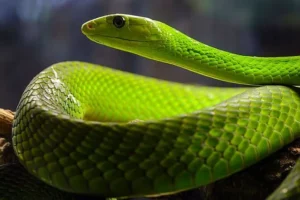
The three different species of green mambas that exist (Western, Eastern, and Jameson) are all fiercely poisonous, combative, and unpredictable. Great. Additionally, all three exhibit the traits of being highly arboreal, vigilant, swift, and nimble. Furthermore, its venom has a significantly faster onset of action, and the dendrotoxins are more harmful to the central nervous system. Not at all.
CONCLUSION
An uncommon tropical illness is snake bite. Snakes are typically not poisonous. Only 10% of all snake bite exposures result from exposure to poisonous snakes. Toxic snake bites, however, can have serious consequences, including the victim’s death or a significant disability.
FAQ
Q#1: What is the number 1 deadliest snake?
Ans: The saw-scaled viper, Echis carinatus, is considered the deadliest snake in the world, according to Britannica. This type of snake is said to be responsible for “more human deaths than all other snake species combined.” The venom of the saw-scaled viper is not as lethal as other snakes, but it is far more aggressive.
Q#2: Which snake kills fastest?
Ans: For instance, the black mamba can bite up to 12 times in one attack and can inject up to 12 times the deadly amount for humans with each bite. Despite having the fastest-acting venom of any snake, this mamba’s bite takes 20 minutes to kill a human because we are much bigger than its typical target.
Q#3: What is the most poisonous animal?

Ans: The number of actual fatalities caused by the blue-ringed octopodes (Hapalochlaena spp.) is significantly less than that of deaths brought on by spiders and snakes, with which human contact is more frequent. However, these octopodes produce tetrodotoxin, which is extremely toxic to even the healthiest adult humans.
Q#4: What snake can beat a cobra?
Ans: Rock Python
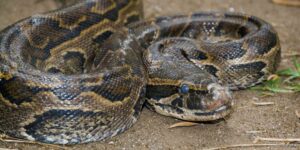
One can’t help but wonder how the snake manages to weigh the benefits and risks of pursuing prey like a rock python, which has the ability to strangle the cobra and kill it. It is evidence that snakes are truly intelligent and intelligent beings.
Q#5: What is the world’s largest snake?
Ans: The reticulated python
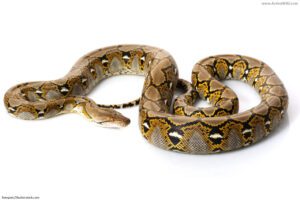
The longest snake in the world, the reticulated python (Malayopython reticulatus), often exceeds 6.25 meters in length.

